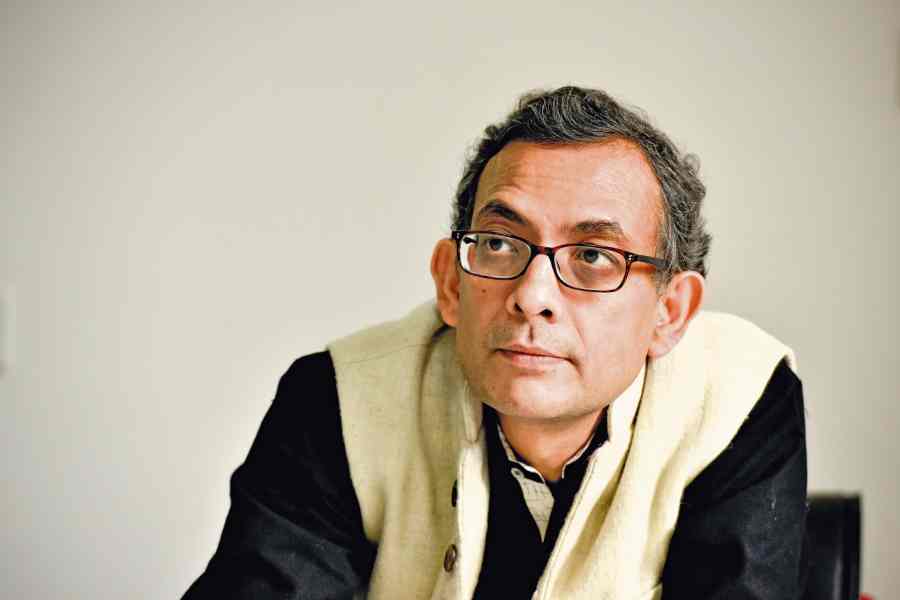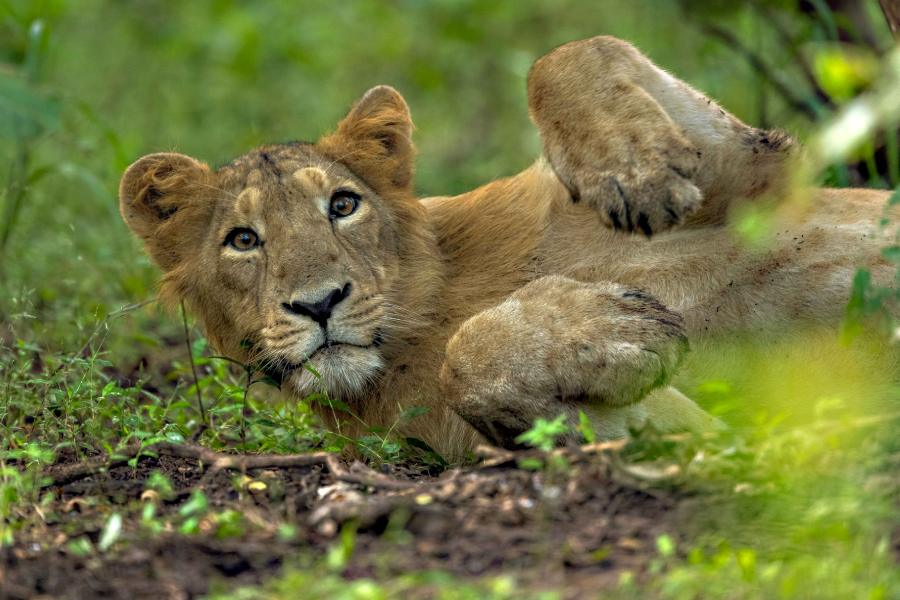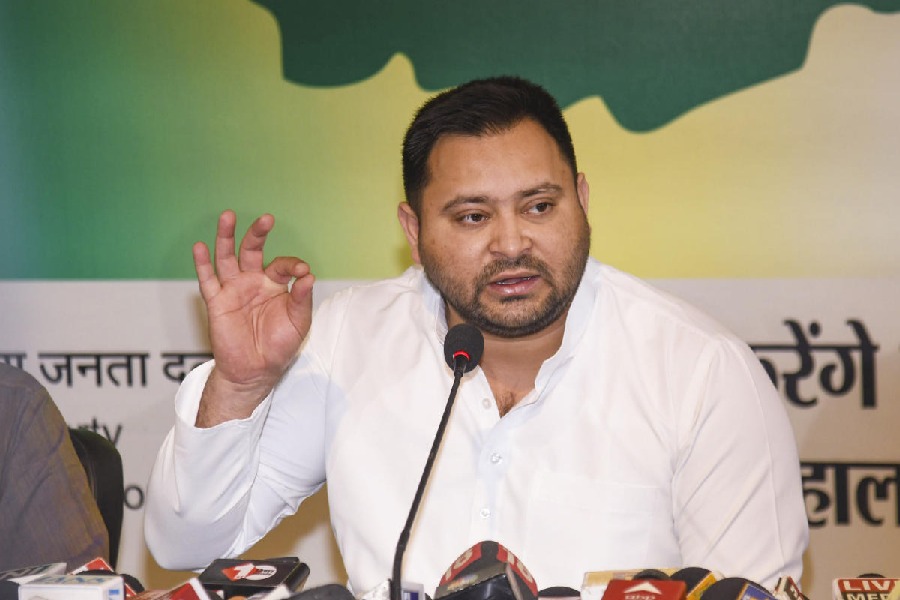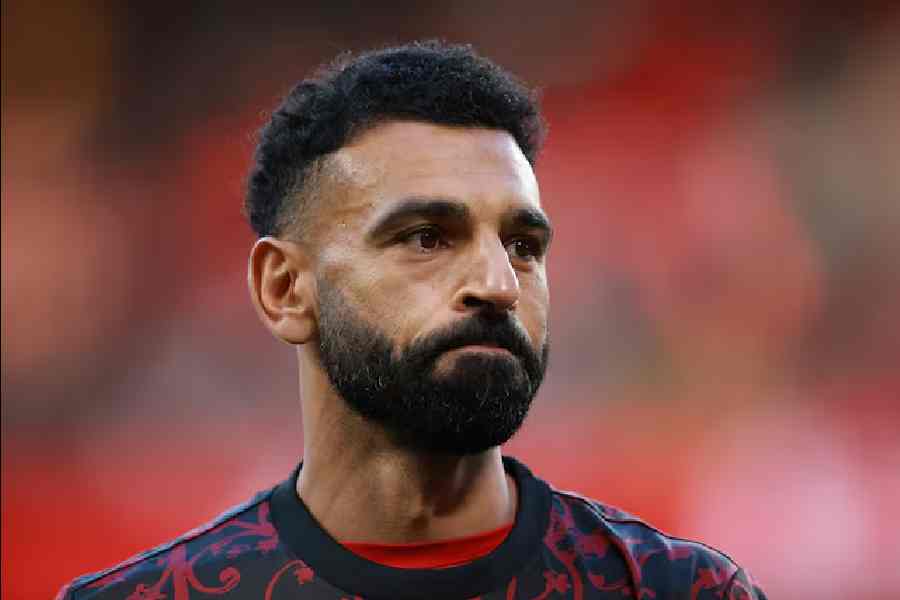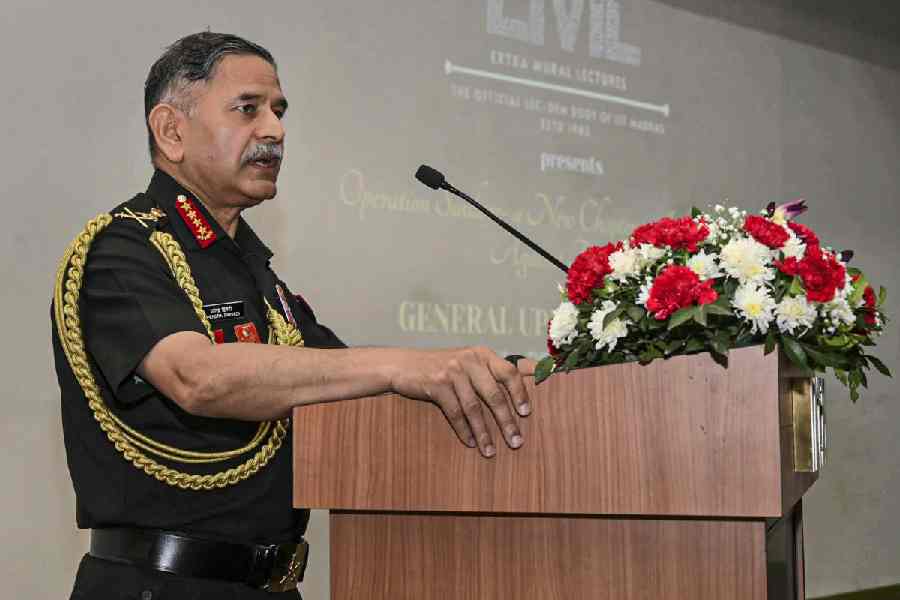 |
| Oil paintings in the collection of the British Indian Association have been restored. Picture by Pabitra Das |
Few if any had noticed the demolition of the old building that housed the British Indian Association in the street named after it a few years ago. The street has already been renamed after Abdul Hamid and a brand new office building has come up in place of the old one.
The association occupies several rooms on the third floor of this building at the head of Barretto Lane. The association still possesses a rich collection of books and paintings and other artefacts, among which are the portraits of local Indian dignitaries who were association members, and two busts of Radhakanta Deb and Kristo Das Paul, besides a priceless collection of books that needs to be looked after.
The association was originally a political organisation that had a role in the creation of the Indian National Congress, whose early meetings were held in this building.
From a political organisation it became a landholders’ organisation, although it also took up causes that affected Indians in general. After the abolition of the zamindari system in the early 1950s, its functions may have been curtailed but over the years it has become a repository of valuable research material.
About 20 years before the establishment of the British Indian Association, Dwarkanath Tagore, Prasanna Kumar Tagore, Radhakanta Deb, Ramkamal Sen, Bhabani Charan Mitra and the then editor of The Englishman had formed the Zamindari Association in 1831. It was later renamed Landholders’ Society and was considered “the first organisation of Bengal with a distinct political object.” Englishmen and Indian landholders met here “on an equal footing”. But after Dwarkanath passed away the society too was as good as dead.
A few years later, William Adam, who became friends with Raja Rammohun Roy during his visit to India, decided to take up India’s cause on returning to England. He was the moving spirit behind the formation of the British Indian Society in 1839. George Thompson, who was also involved in its formation, went on to help create the Bengal British India Society. It was meant to further the interests of all classes of Indians through its recommendations and measures which had to be “consistent with pure loyalty to the person and government of the reigning sovereign of the British dominions”.
Indians felt alienated when Europeans vehemently opposed John Elliot Drinkwater’s efforts in 1849 to bring all British-born subjects of the crown under the jurisdiction of the local law courts. The government was forced to withdraw the “Black bill,” as the Europeans called it. Thereafter, the Landholders’ Society and the Bengal British India at a meeting held on October 29, 1851, at Kasaitola (subsequently Bentinck Street) decided to form the British Indian Association by merging the two bodies to highlight the grievances of Indians.
The first committee of the association was composed of Radhakanta Deb, Kalikrishna Deb, Debendranath Tagore, Digambar Mitra, Prasanna Kumar Tagore, Peary Chand Mitra and Sambhunath Pandit. Besides rajas and maharajas and zamindars, Derozians and the intellectual aristocracy of the Bengal Presidency also held important positions on the committee. Traders and businessmen were also members. But membership was strictly confined to Indians.
The objects of the association “were related partly to improvements in the local administration of the country and partly to the system of Indian government laid by Parliament”. Joteendra Mohan Tagore and Joykrishna Mukherji enabled the association to have a home at 18 Raneemoody Gully, whose name was later changed to British Indian Street.
The association had “an all-India outlook” and in a petition to the Parliament in UK, it criticised the British government for not allowing the Indians “the smallest share in the administration of the affairs of this country.” Among its demands was “the separation of the Legislature from the Executive, and the inclusion of some Indian members in the Legislature.” It supported the move to bring all British-born subjects under the jurisdiction of the ordinary courts. It welcomed the formation of the Mohammedan Association of Calcutta in 1856 as the association wanted to give new shape to the Indian polity.
During the Indigo Rebellion of 1859-60, the association sympathised with the ryots and pleaded with the government to appoint a commission of inquiry to solve the problems of indigo cultivation. The association tried to impinge on social and living conditions by suggesting measures on epidemics, floods, famines, taxation, the practice of Sati, burning ghats and property and inheritance.
It championed the causes of the Indian people at a time when there was no strong political body in the country. The association in 1874 “suggested that public opinion in India should be taken into consideration before enactment of any legislation concerning India”. The association gave the people the first lesson in the art of fighting constitutionally for their rights and giving expression to their opinions. All bills were sent to the association for comment, some of which were quite incisive.
The second meeting of the Indian National Congress was held in the association building on December 28, 1886. M.K. Gandhi, Bar-at-Law from Durban, visited the association in 1891 to draw the viceroy’s attention to the plight of Indians in South Africa.
Now that there aren’t any landholders the association will support research work with its meagre funds, said I.P. Singh Roy, the honorary president of the organisation. The library which contains important books, some dating back to 1783 like Ayeen Akbery in translation and others belonging to the 19th century and early 20th century, will be preserved. Many of its collection of large oil paintings have been competently restored by Narayan Srivastava. In our times, British Indian Association can survive as an institution promoting excellence.


